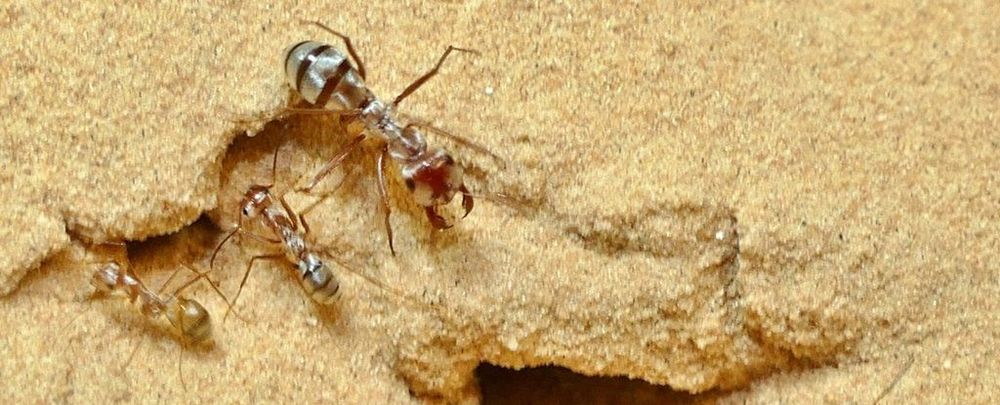Page 7362
Oct 17, 2019
Could Elon Musk’s project erase the night sky?
Posted by Amberley Levine in categories: Elon Musk, satellites
If approved, 12,000 telecommunication satellites could blot out existing stars.
In the coming years, 12,000 or more artificial stars will join the sky.
Death rates from cancer are down, but the number of Americans dying each year is higher than ever. A new method enables people to achieve higher blood levels of anti-cancer nutrients found in cruciferous vegetables.
Oct 17, 2019
Huge CERN Experiment Detects Two Extremely Rare Particle Decay Events
Posted by Quinn Sena in category: particle physics
For several years now, physicists at the European Organisation for Nuclear Research (CERN) have been running a landmark experiment, recording tens of billions of particles break apart in the hopes of catching a few oddballs. And they finally have some intriguing results to share.
This experiment, called NA62, has researchers building and destroying pairs of quarks called kaons, looking for examples of a one-in-10 billion event that could verify some of the predictions of the Standard Model of particle physics. Last year they found one. Now they’ve added another possible two.
The findings were presented at a recent CERN Seminar and were based on data collected in 2017; ten times the amount of data harvested the previous year.
Oct 17, 2019
The ‘blob’: Paris zoo unveils unusual organism which can heal itself and has 720 sexes
Posted by Quinn Sena in category: neuroscience
It is bright yellow, can creep along at a speed of up to 4 centimeters (1.6 inches) per hour, can solve problems even though it doesn’t have a brain and can heal itself if it is cut in two.
Meet the “blob,” an unusual organism which will go on display Saturday at the Paris Zoological Park, as part of a first-of-its-kind exhibition intended to showcase its rare abilities.
The slime mold, which is known officially as physarum polycephalum (or “the many headed slime”) is neither a plant, an animal or a fungus. It doesn’t have two sexes — male and female — it has 720. And it can also split into different organisms and then fuse back together, according to a press release from the Zoological Park.
Oct 17, 2019
Neurosurgeon: EMF Radiation Can Cause Leak In Blood Brain Barrier
Posted by Quinn Sena in categories: biotech/medical, internet, mobile phones, neuroscience

The industry science behind EMF radiation is more corrupt than that of climate science, and has been so since the beginning. With the imminent rollout of 5G, no scientific studies have been done on exposure to humans at any distance. ⁃ TN Editor.
Neurosurgeon and researcher Dr. Leif Salford has conducted many studies on radio frequency radiation and its effects on the brain. Dr. Salford called the potential implications of some of his research “terrifying.” Some of the most concerning conclusions result from the fact that the weakest exposure levels to wireless radiation caused the greatest effect in causing the blood brain barrier to leak.
Continue reading “Neurosurgeon: EMF Radiation Can Cause Leak In Blood Brain Barrier” »
Oct 17, 2019
World’s Fastest Ant Has Just Been Clocked at a Breathtaking 855 Millimetres Per Second
Posted by Quinn Sena in category: futurism
When you think of fast animals, it’s probably something like cheetahs, or greyhounds. But when measuring in body lengths per second, the arthropod world is unmatched. And now we have a new record-holder — the fastest speed ever measured in an ant.
The winner is the Saharan silver ant (Cataglyphis bombycina), and the speed is 855 millimetres (33.66 inches) per second.
That may not sound like much to you, but that’s 108 times the insect’s body length per second. Even the cheetah can only manage 16 body lengths per second. Usain Bolt’s top speed is 6.2; if he could travel at Saharan silver ant speeds, his top running speed would be around 800 kilometres per hour.
Oct 17, 2019
Weaving quantum processors out of laser light
Posted by Genevieve Klien in categories: computing, quantum physics
An international team of scientists from Australia, Japan and the United States has produced a prototype of a large-scale quantum processor made of laser light.
Based on a design ten years in the making, the processor has built-in scalability that allows the number of quantum components—made out of light—to scale to extreme numbers. The research was published in Science today.
Quantum computers promise fast solutions to hard problems, but to do this they require a large number of quantum components and must be relatively error free. Current quantum processors are still small and prone to errors. This new design provides an alternative solution, using light, to reach the scale required to eventually outperform classical computers on important problems.
Oct 17, 2019
Game Over: These Monkeys Just Crushed Humans on a Computer Game
Posted by Quinn Sena in categories: computing, entertainment
While playing a game, monkeys switched strategies each round, while humans stuck to a set of inefficient rules.
Oct 17, 2019
Role of Epigenetics in Human Evolution
Posted by Quinn Sena in categories: evolution, genetics
Circa 2017
This review aims to highlight the key areas in which changes to the epigenome have played an important role in the evolution and development of our species. Firstly, there will be a brief introduction into the topic of epigenetics to outline the current understanding of the subject and inform the reader of the basic mechanisms and functions of the epigenome. This will lead on to more focussed detail on the role played by epigenetic changes in the rapid evolution of our species and emergence from our ancestor species, as well as the Human Accelerated Regions that played a role in this. The discussion highlights how epigenetics has helped and hindered our species’ development via changes to the epigenome in more modern times, discussing case examples of documented instances where it is shown that epigenetics has played a role in the evolution of humanity.

















